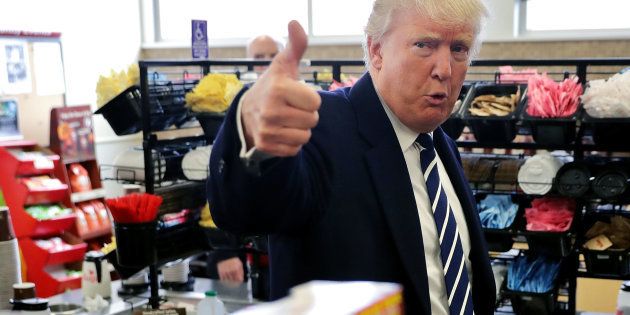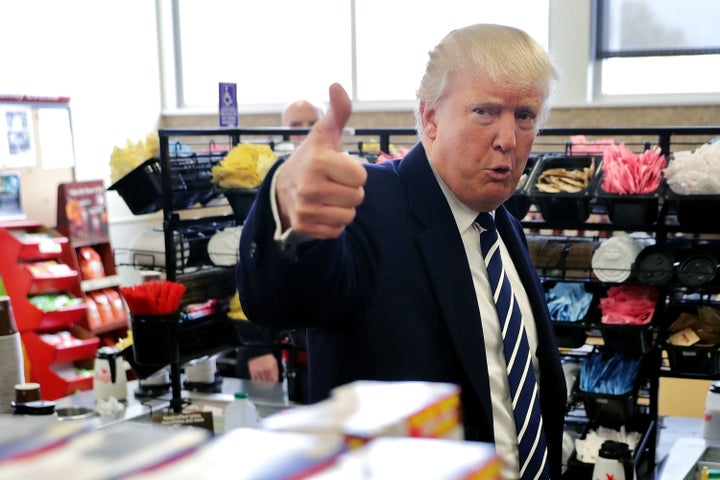

It’s been just over a month since Donald Trump’s victory, and as the media is still in the midst of its post-election autopsy, a super villain has emerged: fake news.
Yes, the new consciousness of fake news is everywhere. Each week brings a steady stream of think pieces on our new “post-fact” reality, and Hillary Clinton herself has called for a bipartisan fight against the fake news “epidemic.” And this month, Politifact named fake news its “2016 Lie of the Year.”
It’s become the new way to explain our national divide, a split so vast it goes beyond political beliefs. Reporting for The New Yorker on the Trump campaign trail in July, George Saunders identified “two subcountries” that “draw upon non-intersecting data sets and access entirely different mythological systems.”
According to the prevailing narrative, the great enabler of the rise of fake news is social media. Look no further than Michael Flynn, Donald Trump’s pick for national security adviser, who has repeatedly shared fake news and conspiracy theories on Twitter. The Trump transition team even fired Flynn’s son for doing the same. It’s easier than ever to spread misinformation.
There is a social media lesson here. But it’s that social media tools are, after all, just that: tools. The same tools that can build understanding and connection and give voice to the voiceless can, yes, also be used to spread misinformation. But the greater lesson is that by putting all the blame on social media, we can be distracted from the fact that, though the term “fake news” might be new, the underlying phenomenon is not. And it didn’t start with social media, or even in the age of social media. The fault, dear Brutus, is not in our social media tools.
In fact, fake news has been with us, in different guises, since long before anyone ever had the chance to tweet it. And our understanding of the current fake news problem, and our ability to combat it in the future, depends on our willingness to expand our study and skepticism of news that, for various reasons, has the power to misinform – and have serious consequences.
Yes, much of the fakery springs from sources well outside the mainstream media, like the Macedonian teenager who realized he could make a lot of money slinging Trump-slanted propaganda.
Pizzagate is not the first, or the most consequential, example of fake news having real-world consequences.
But a wider look reveals that it’s not just rogue outsider mercenaries spreading fake news. As in the classic horror movie scene, many of the calls are coming from inside the house.
In recent history, a major example of fake news is Judith Miller and the selling of the Iraq war. There’s an old saying in journalism: “too good to check.” Sometimes a story you hear is just too good, suspiciously good. You don’t want to dig into the details, because there’s a risk: start asking questions and the whole story might fall apart. And it’s a good description of a lot of Miller’s Iraq War reporting. To their credit, many of Miller’s colleagues at the time actually did try to check the stories. But even so, the Times continued printing Miller’s stories on the front page, credulously reporting the government’s claims that Saddam Hussein had weapons of mass destruction, beating the drums for war. And those same stories were repeated and amplified, not on social media but on the house organs of the media establishment, the Sunday morning shows. We know how that turned out. So, Pizzagate is not the first, or the most consequential, example of fake news having real-world consequences.
And we’re still living with the consequences of this outbreak of fake news back in 2002-2003 — not only in the Middle East, but every time we check our phones for the latest updates, switch on the TV news or scan our Facebook feeds. What can we believe? This article I’m reading—who wrote it, and why?
Journalism has no Hippocratic Oath, no injunction to “do no harm.” Yet again and again, we see individuals and institutions chip away at the public trust and reverence for facts that are the foundation of the entire proposition. Whatever we want to call it now, fake news has always been with us.
It’s been said many times in the wake of Trump’s election that there’s never been a more important time for thorough, uncompromising reporting, and this is true. But it will take more than simply blaming social media for its powers of distribution, or sniping about those on the other side of the ideological divide who get their news from sources different from our own.
We’d do well to reacquaint ourselves to another old saying in journalism: “If your mother says she loves you, check it out.”